10 brilliant discoveries NASA's Solar Dynamics Observatory made in its first decade in space
This week, NASA is celebrating the 10th anniversary of its Solar Dynamics Observatory (SDO), a sensitive spacecraft that has shown the world never-before-seen imagery of the sun.
The mission launched on Feb. 11, 2010, and during the spacecraft's first decade in orbit, it has viewed planets crossing in front of the sun, studied the activity of sun's scorching outer atmosphere (known as the corona) and witnessed nearly an entire 11-year solar cycle.
To celebrate 10 years of solar science from SDO, NASA has highlighted the top 10 most amazing discoveries to come out of the data and scientific imagery collected by the spacecraft over the past decade.
Video: Amazing sun views and science delivered in 10 Years of NASA SDO
Related: Scientists' favorite photos from the Solar Dynamics Observatory
1. Solar flares
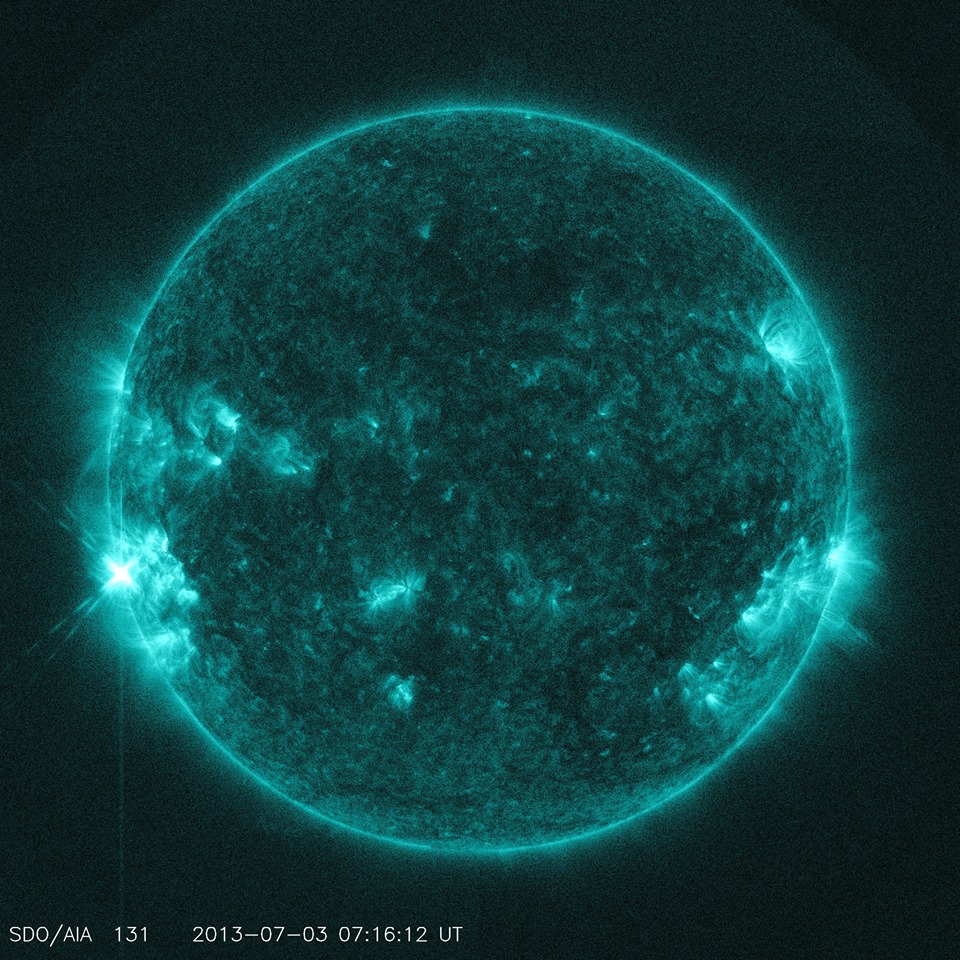
SDO has spotted raging solar flares erupting from the sun's surface. The spacecraft's cameras and science instruments are zeroed in on the sun to catch these scorching filaments of solar plasma when they appear. The $850 million observatory studies Earth's closest star through multiple wavelengths of light to produce incredible footage of the sun's activity. According to NASA, SDO saw nearly 200 solar flares in its first 18 months, allowing scientists to spot a "late phase flare" pattern and thus help them better understand how much energy the sun releases during a flare.
This image shows an M1.5-class solar flare (lower left) on July 3, 2013. The solar flare erupted at about 3 a.m. EDT (0700 GMT) and was spotted by SDO, which snapped a photo of that month's solar storm.
2. Solar tornadoes
SDO imagery helped scientists study the sun's giant tornadoes, bringing astronomers one step closer to solving the mystery of why the sun's outer atmosphere is hundreds of times hotter than its surface. These swirls, or tornado prominences, are several times larger than Earth and are made of hot flows of gas and entwined magnetic-field lines that remain rooted to a fixed point on the solar surface.
Get the Space.com Newsletter
Breaking space news, the latest updates on rocket launches, skywatching events and more!
Though Earth tornadoes can reach powerful speeds of up to 300 mph (482 km/h),tornado prominences far outrank the terrestrial storms with speeds of up to 186,000 mph (300,000 km/h), according to NASA.
The video above shows a close-up view of a magnetic tornado in the sun's atmosphere, as seen by SDO in February 2012.
3. Giant waves
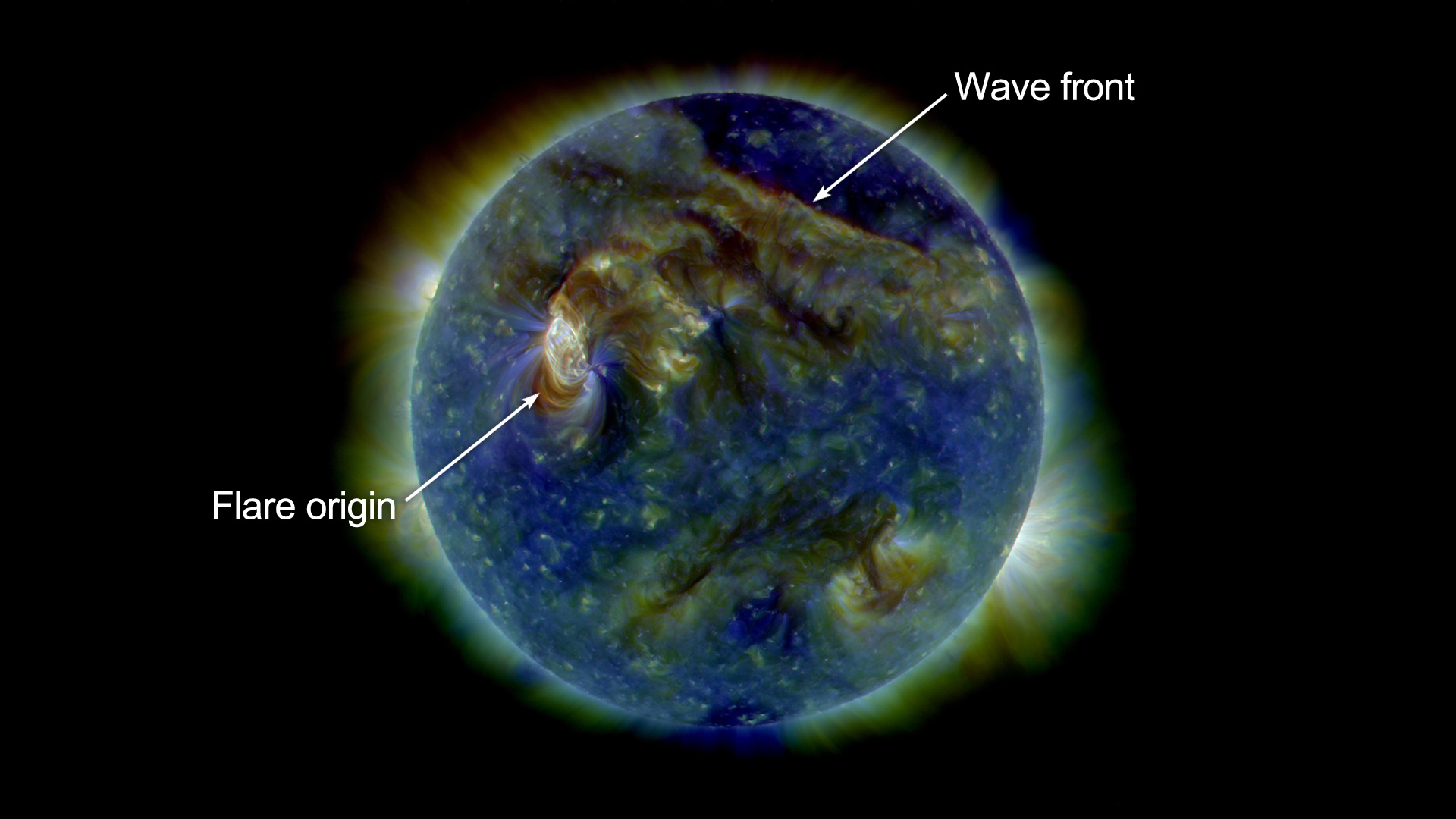
This SDO image shows a so-called EIT wave as it traveled across the upper half of the sun on Aug. 1, 2010.
EIT waves are the peaks and valleys of hot and electrically charged gas, called plasma, that roll across the sun's surface, according to NASA. The waves are named after the instrument that discovered them: the Extreme Ultraviolet Imaging Telescope onboard an SDO predecessor called the Solar and Heliospheric Observatory.
SDO's observations of EIT waves during its first year in space showed for the first time how the EIT waves move across the star's surface, according to NASA. Coronal mass ejections, or volatile stellar "burps" that carry solar plasma out from the sun and into the solar system, might be what triggers EIT waves, the space agency said.
4. Comets
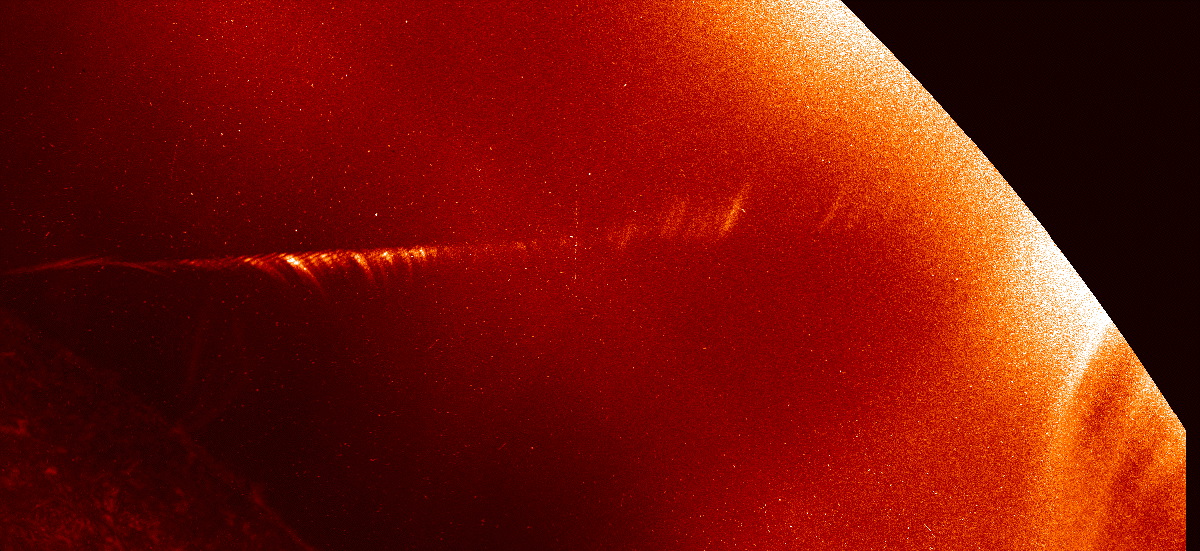
Icy comets that originate in the outskirts of the solar system sometimes swing by the sun, and scientists like to watch these approaches to see which comets survive the close encounters and which ones evaporate and disintegrate.
In December 2011, SDO caught images of Comet C/2011 W3 Lovejoy as it skimmed over the sun's surface. SDO's images of Lovejoy were the first to show a comet traveling so low in the sun's atmosphere, according to NASA, and SDO's instruments collected new information about how the sun interacts with comets.
5. Global circulation
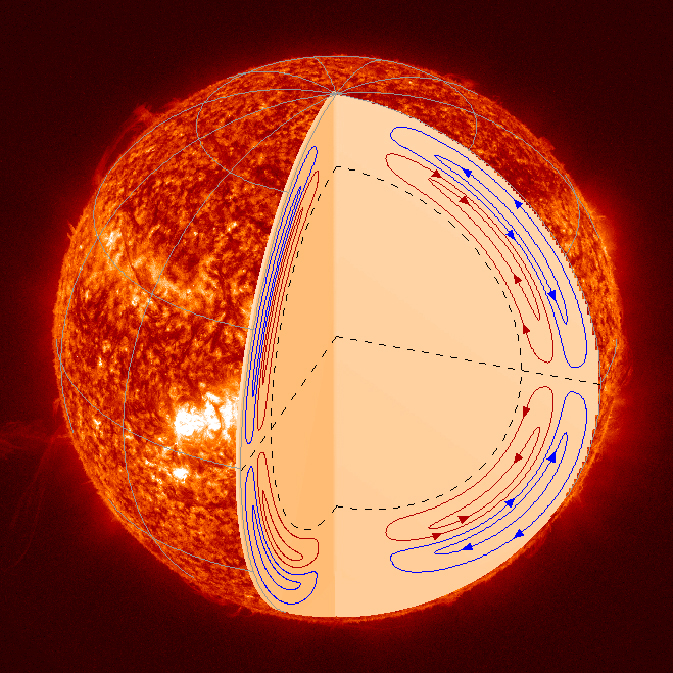
SDO helps scientists learn more about the sun's plasma. The sun is more complicated than scientists once thought, SDO data suggest. The spacecraft's Helioseismic and Magnetic Imager instrument, which is operated by scientists at Stanford University, watches the motion of plasma waves, just like scientists study seismic waves that travel below the surfaces of Earth and Mars The observations revealed new details about the conveyor-like mechanism that transports plasma throughout the sun, called meridional flow.
The sun's meridional circulation is shown in this artist's illustration, which is based on research at Stanford's Hansen Experimental Physics Laboratory. This circulation pattern is linked to sunspot production and may explain why one solar hemisphere might have more sunspots than the other at certain times, according to NASA.
6. Coronal mass ejections
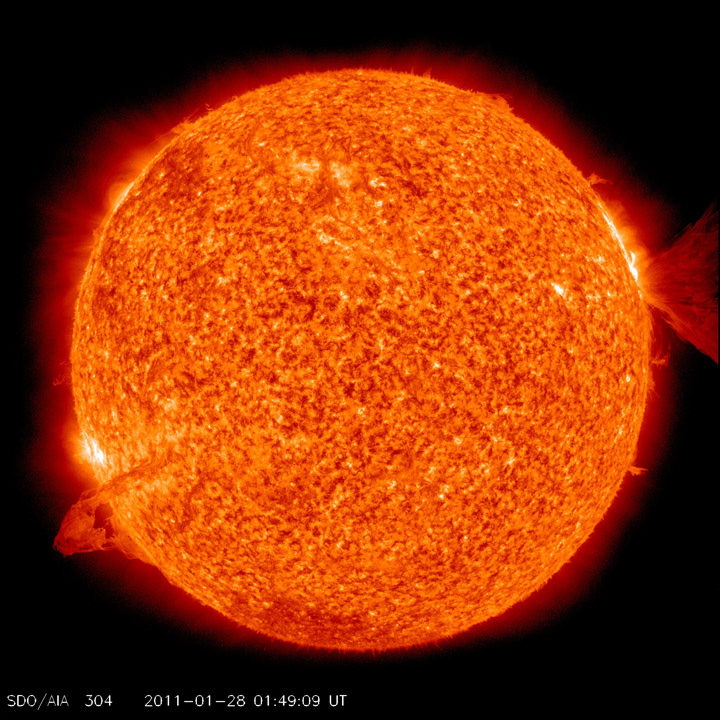
SDO took this image of the sun on Jan. 28, 2011, as it fired off two solar flares. The midsize M-1 flare on the right was accompanied by a coronal mass ejection (CME) that blasted into space.
A CME is an outpouring of material that can be hazardous to astronauts and spacecraft if it erupts in Earth's direction. NASA researchers have used SDO data to predict how these blasts could affect Earth and to model the solar wind's three-day journey to Earth.
7. Coronal dimming
CMEs can be accompanied by coronal dimmings. CMEs, like the one depicted in this video from a solar storm in 2012, can send billions of tons of plasma particles into space, and this evacuation of solar stuff is linked to dimming regions on the sun.
To predict when this charged material might head toward Earth, scientists developed a statistical analysis of several events spotted by SDO. Researchers also hope to use the science of coronal dimming to view CMEs from stars that are too far away for scientists to directly measure the eruptions, according to NASA.
8. Almost an entire solar cycle
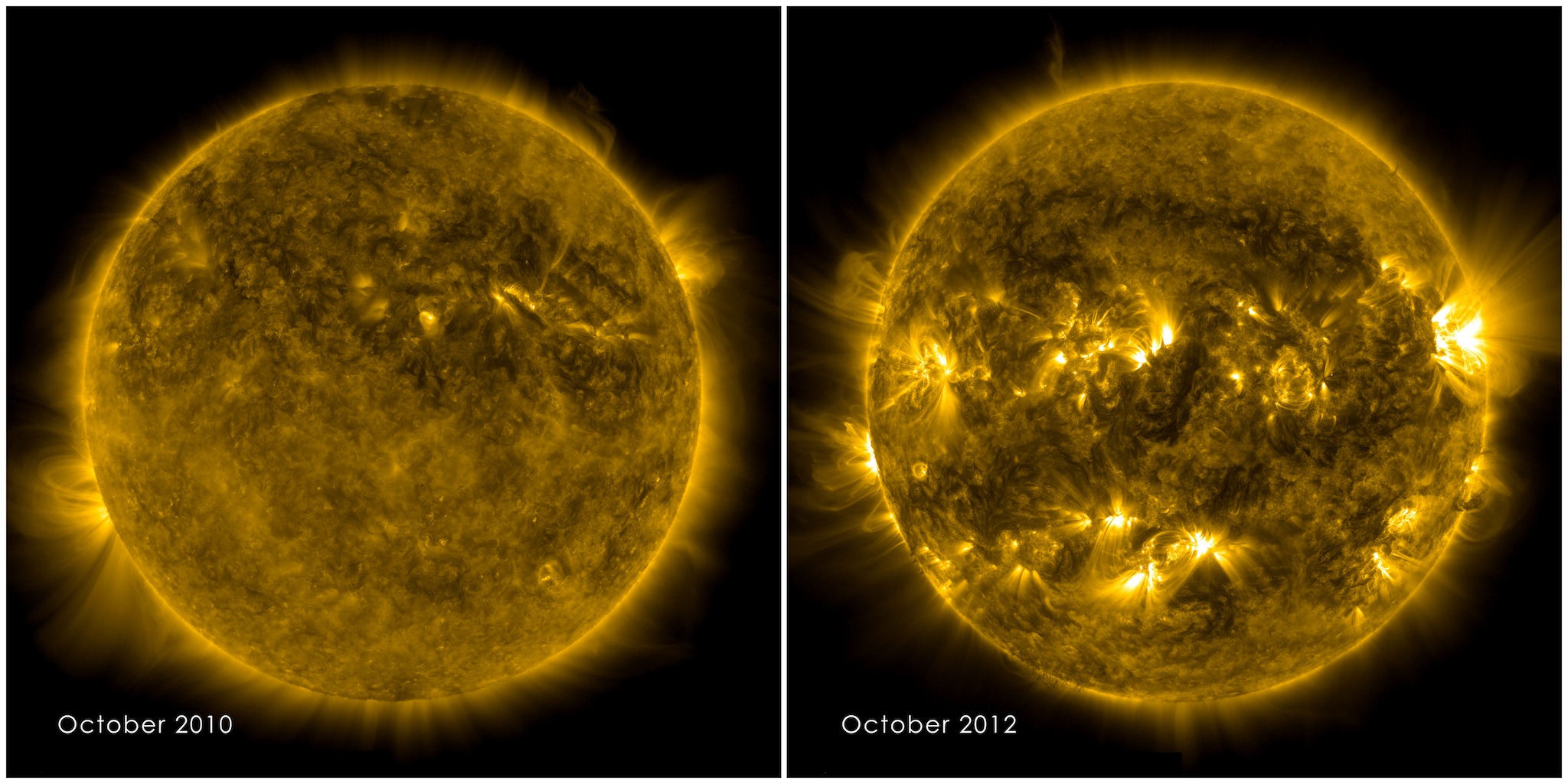
SDO has been in space for a decade, so it has viewed nearly a complete 11-year solar cycle. This year, the sun is exiting its dormant period, or solar minimum, and will slowly reawaken to its more active period, or solar maximum.
These side-by-side images, taken by SDO, show the sun when it's at almost opposite ends of its 11-year cycle of activity. Solar minimum is on the left, and solar maximum is on the right. SDO's years of observations are helping scientists understand the evolution of a solar cycle, according to NASA.
9. Polar coronal holes
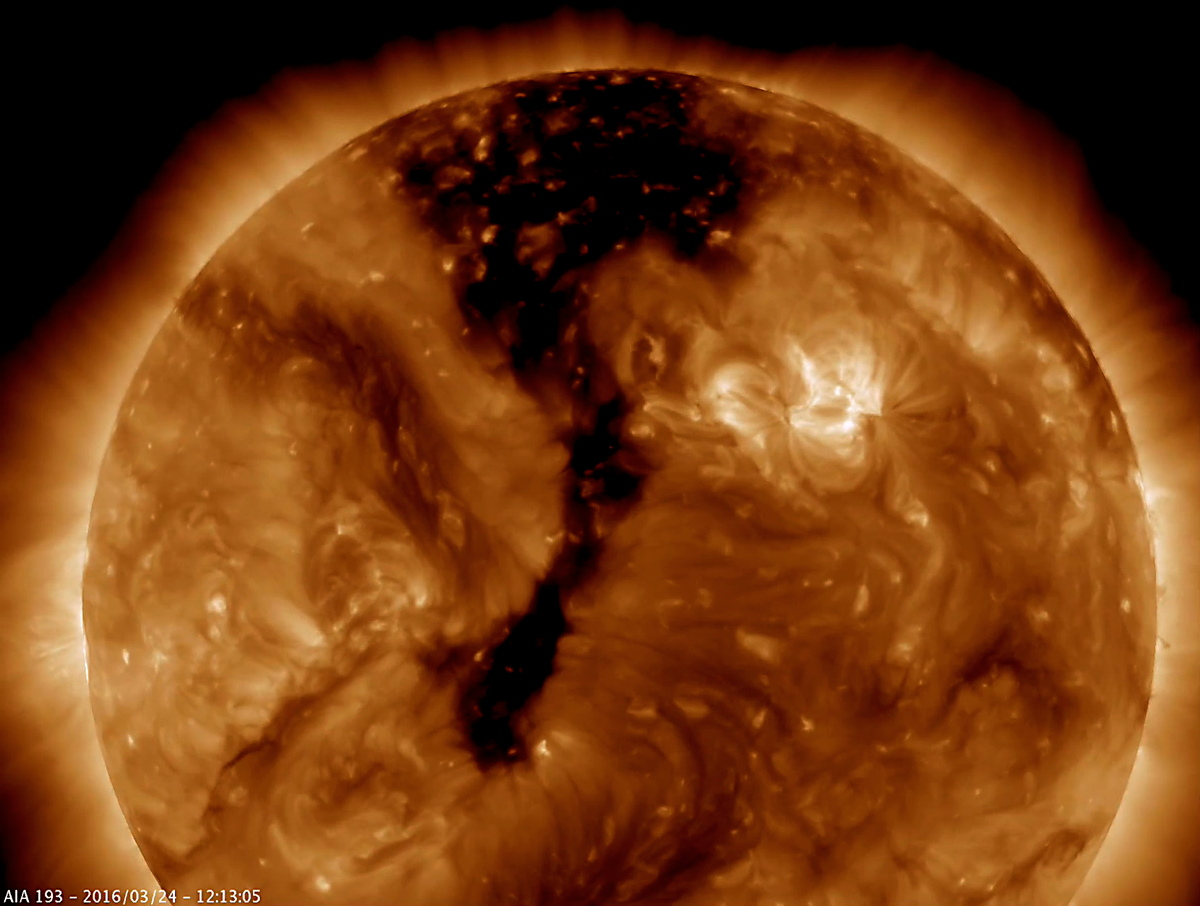
Massive coronal holes on the solar surface, like the one seen in this March 24, 2016, image taken by SDO, are interesting to scientists because charged particles can escape from these gaps in the sun's outer atmosphere.
Scientists also focus on these features because, when these holes disappear after forming near the sun's north or south pole, it can hint to scientists that the star's magnetic field has reversed, marking a more exact moment of solar maximum, according to NASA.
10. Spontaneous magnetic reconnection
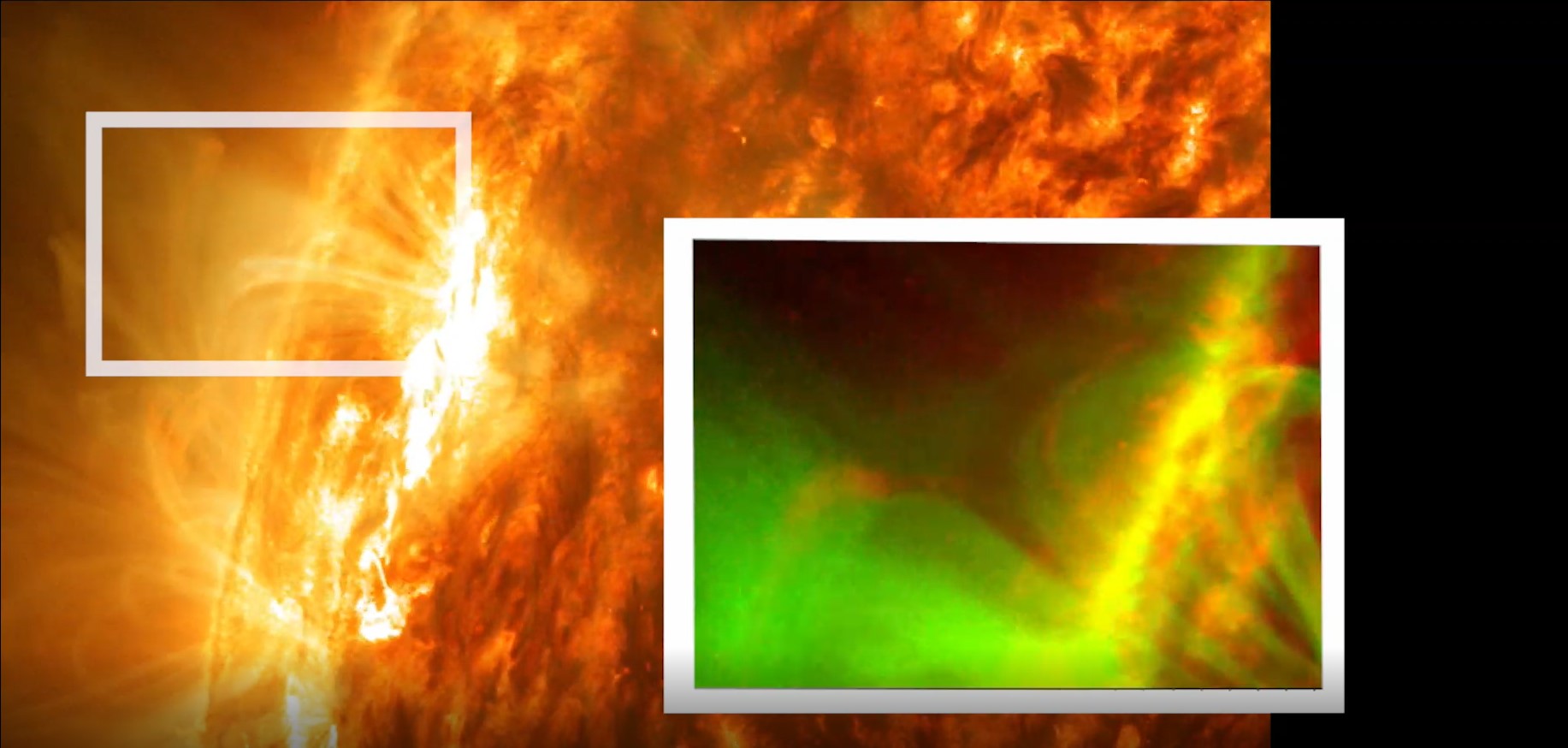
A previously unknown kind of solar process, called forced magnetic reconnection, was seen for the first time in SDO imagery. The spacecraft's Atmospheric Imaging Assembly instrument captured the X-shaped event that happened on May 3, 2012. It's a type of magnetic explosion caused by a solar prominence, a large loop of material that erupts over the sun's surface.
Although scientists had predicted over a decade before its discovery that forced magnetic reconnection did, in fact occur, SDO was the first to view it directly. This new finding was made just a few months ago, in December 2019.
- The greatest missions to the sun
- World's largest solar telescope produces never-before-seen image of our star
- Devastating solar storms could be far more common than we thought
Follow Doris Elin Urrutia on Twitter @salazar_elin. Follow us on Twitter @Spacedotcom and on Facebook.
Join our Space Forums to keep talking space on the latest missions, night sky and more! And if you have a news tip, correction or comment, let us know at: community@space.com.

Doris is a science journalist and Space.com contributor. She received a B.A. in Sociology and Communications at Fordham University in New York City. Her first work was published in collaboration with London Mining Network, where her love of science writing was born. Her passion for astronomy started as a kid when she helped her sister build a model solar system in the Bronx. She got her first shot at astronomy writing as a Space.com editorial intern and continues to write about all things cosmic for the website. Doris has also written about microscopic plant life for Scientific American’s website and about whale calls for their print magazine. She has also written about ancient humans for Inverse, with stories ranging from how to recreate Pompeii’s cuisine to how to map the Polynesian expansion through genomics. She currently shares her home with two rabbits. Follow her on twitter at @salazar_elin.









